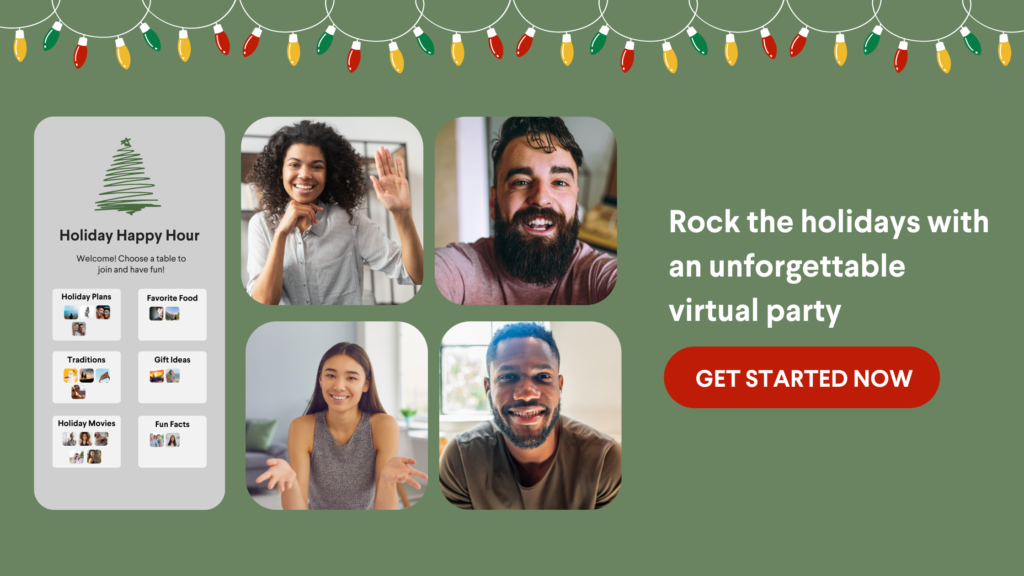How does your trade association plan to make up for lost revenues from the cancellation or postponement of your in-person events?
Online industry trade show events have been vital in keeping communities connected since the onset of COVID-19, providing innovative ways for attendees and exhibitors to engage through virtual event platforms. Capabilities like live demos, exhibition halls with virtual booths, and robust chat functions can effectively replicate many beloved aspects of in-person events.
Despite the potential of virtual trade shows, however, nearly nine in ten industry trade professionals (86%) are still challenged with transitioning an in-person event to a virtual setting—which is understandable, given that many teams just started exploring virtual events within this last year.
To accelerate your event planning, we recommend you set goals for your upcoming virtual trade show and then craft an agenda to fulfill those needs. Let’s explore how to build an engaging online trade show schedule that creates meaningful opportunities for your attendees, exhibitors, sponsors, and other partners.
9 Online Industry Trade Show Agenda Activities
After reviewing recent and upcoming conferences from the American Society of Association Executives, Michigan Society of Association Executives, Colorado Society of Association Executives, and countless others, these are the must-include agenda items for your next virtual industry association trade show:
- Board meeting: Your association board should meet during your conference. Most associations host this meeting on the first morning of their conference or shortly after the main conference wraps.
- Vendor demos/Exhibition Hall/Solutions Lounge: Your attendees need dedicated spaces to engage with your event exhibitors and partners. Enable exhibitors to showcase their solutions to your attendees in a virtual exhibition hall or vendor demo space. Offer an opportunity for Q&A, live demos, and hands-on learning to ensure exhibitors and sponsors see plenty of virtual foot traffic.
- Awards recognition: Host an awards ceremony that celebrates your trade show or industry association community (if relevant). These award ceremonies are an opportunity to spotlight members of your community and recognize them for their strides in your field or their dedication to your group.
- Express talks/Speed networking sessions/Short breakouts: Not all conference sessions should keep all conference-goers captive for an hour. Instead, offer breakout sessions of varying lengths for your attendees to dive into niche topics of interest that complement your overarching event theme. These smaller-group breakouts are perfect opportunities for attendees to mix and mingle in a more intimate setting than the conference keynotes. Offer two or three concurrent breakout sessions at a time to increase the diversity of your speaker roster and thoroughly explore the topics your audience cares about.
- Roundtable sessions: Gather a diverse roster of speakers to lead smaller group discussions on topics of interest to your attendees. Each speaker should have a unique element they can lend to the conversation—including the title or level of the speaker, their industry, or their specific experience with the topic—to support a well-rounded conversation.
- Lunchtime sessions or opportunities: Every minute of your conference should include some way to delight your attendees—and that includes lunch. Coordinate group conversations, 1:1 meetups, or informal lunch-and-learn sessions that attendees can join during lunch. Consider hosting a purely entertainment-focused activity, like a cooking demo, comedian set, or short film screening if your budget allows.
- 1:1s by appointment: Carve time from your agenda to coordinate one-on-one meetings with attendees, exhibitors, and other event partners. Attendees should be able to make appointments throughout your conference, not just in small exhibit hall break windows. Some attendees won’t mind missing a session to meet with a vendor (especially if your sessions are available for on-demand consumption). Build the meeting scheduling into your event platform, but be sure to integrate it with attendee calendars.
- Training and certification opportunities. What official training or support programs will you offer to attendees? Many trade show events or industry membership association meetings are championed for their on-site certification and professional development opportunities. These sessions work just as well virtually, too! Consider saving one day of your conference exclusively for these opportunities (either the first or last day).
- After-hours entertainment. After a long day of joining sessions, networking, and striking up social media conversations, your trade show attendees need a way to unwind. So offer activities after the main conference sessions are over. These social activities can be as simple as an attendee happy hour or something elaborate like a wine and paint night or an exclusive musical performance.
Guide Trade Show Attendees from Experience to Experience
When developing your agenda, ensure that all activities have a clear purpose and that you don’t overwhelm your attendees with choices. For example, the Higher Logic team learned from its virtual Super Forum that their attendees felt they had too many options to choose from. Although that’s a “good problem” to have, it’s still a problem.
Event organizers must prepare their attendees for all the virtual event opportunities, including navigating attendees from experience to experience. Simply posting your event schedule and leaving it to your attendees to remember where they need to be and when for which sessions will likely lead to steep attendee drop off as your event continues.
Create a cohesive event experience for attendees by making the event agenda readily available on your conference site and through your conference mobile application. Enable attendees to add sessions to their calendars automatically so they don’t miss out.
During sessions, ask speakers to direct attendees to the next session or alert them of their options for what to do next. These verbal cues can be complemented with on-screen visuals, like a banner that urges attendees to return to the event platform lobby or a pop-up that links to the next session.
Prepare “Coming Next” or “We’ll Be Right Back With [next activity]” graphics to alert in-person and virtual attendees of what’s next, and think through your attendee transitions to ensure that there is no potential for confusion.
Pick A Trade Show Event Technology Platform That Elevates the Attendee Experience
You have thoroughly documented your trade show goals and crafted a diverse series of events that supports those needs. Great! Your team is almost ready to host a successful virtual event. That is, of course, if your chosen event platform supports the quality of experience that your attendees expect.
The success of your trade show will depend on if attendees can freely network with exhibitors and sponsors, gain answers to their questions, and assess what solutions are best for their needs. But many event platforms are built with sub-par capabilities that lock attendees in a single room with no ability to connect with other conference attendees.
Deliver the experience that your attendees deserve by using Social hour to support your next industry trade association event. The team at Frameable built the platform to support a wide range of event sessions and engagement opportunities, including pre-recorded or live-streamed keynotes, concurrent breakout sessions, and networking rooms that foster genuine engagement. Learn more about the Frameable Events platform and get started to create a more engaging virtual event experience today.











